Results
-
 £42.50
£42.50Malaguea
Artist Level (correlates with Book 1, p. 34) Taking a more traditional Spanish approach to this well-known tune, Michael Sweeney uses a 3/4 key signature throughout, active percussion writing and solid scoring to create thisexciting yet easy-to-play arrangement. (1:45)
Estimated dispatch 7-14 working days
-
 £57.50
£57.50Dueling Xylos
Take your two best percussionists, stage them up front and let them dazzle your audience with this clever feature for two xylophone players (or 1 xylophone and 1 marimba). Using the classic Dueling Banjos, Richard Saucedo has written a great novelty with easy band parts as accompaniment.
Estimated dispatch 7-14 working days
-
 £127.30
£127.30Easy Peasy - Hilde Høyvik Dahl
This suite is written for beginning band at grade level 1. It consists of five short movements of various style. You may perform the movements as single pieces. The composition consist basically of three voices to make it playable also for smaller ensembles. However, it's preferable that trumpet/cornets play part no. 1 and clarinets play part no. 2 when necessary.
Estimated dispatch 7-14 working days
-
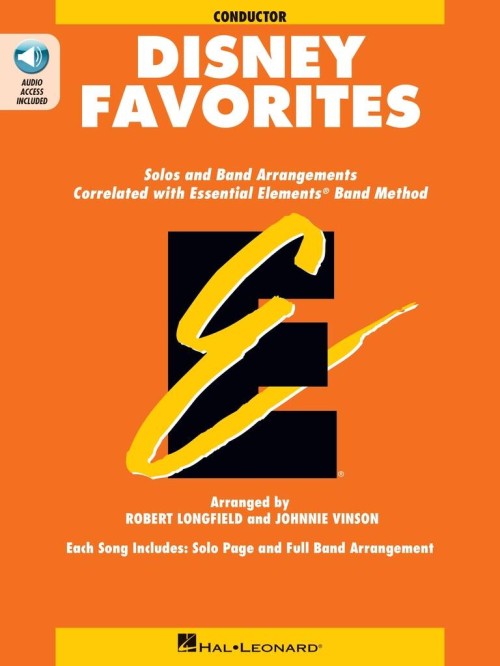 £8.99
£8.99Disney Favorites (Concert Band Instrumental Folio Books) - Longfield & Vinson
There's no better way to motivate your band than with some popular Disney music! This collection from Essential Elements works with all ensembles, regardless of what method you're using, and features great songs your band members are sure to know. The arrangements work for the whole ensemble to play together, but also as solo works for each instrumentalist! The songs are carefully correlated to correspond with instruction in the Essential Elements method books 1 and 2 so you'll know exactly when your group is ready to take on another song. A handy chart is provided in the table of contents so you can see the progress requirements.Songs include:Beauty and the Beast (from Beauty and the Beast)Can You Feel the Love Tonight (from The Lion King)Colors of the Wind (from Pocahontas)He's a Pirate (from Pirates of the Caribbean: The Curse of the Black Pearl)Let It Go (from Frozen)Remember Me (Ernesto de la Cruz) (from Coco)Try Everything (from Zootopia)Under the Sea (from The Little Mermaid)We Don't Talk About Bruno (from Encanto)We're All in This Together (from High School Musical)Each student book includes parts for the full band arrangement as well as separate pages for solo use. The conductor's edition includes full scores of all the band arrangements and a sample solo page of each song as well as access to online full-band recordings of each song.The Value Pack includes:1 x Conductor Book with Online Audio6 x Flute1 x Oboe1 x Bassoon6 x Clarinet1 x Bass Clarinet4 x Alto Saxophone1 x Tenor Saxophone1 x Bari Saxophone6 x Trumpet2 x F Horn2 x Trombone1 x Baritone BC1 x Baritone TC1 x Tuba2 x Percussion1 x Keyboard Percussion
Estimated dispatch 7-14 working days
-
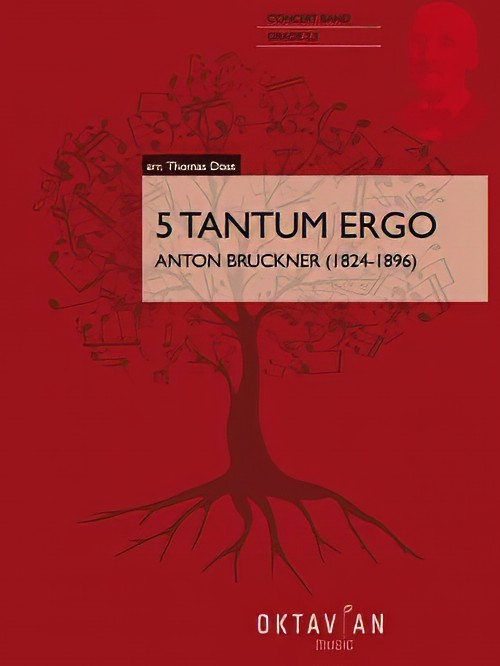 £95.99
£95.995 Tantum Ergo (Concert Band - Score and Parts) - Bruckner, Anton - Doss, Thomas
Anton Bruckner (b. 4.9.1824, Ansfelden, d. 11.10.1896, Vienna) didn't have it easy. Throughout his life, the Austrian composer was plagued by self-doubt. Anton Bruckner came from a simple, rural background. After the death of his father, he was accepted as a choirboy at the monastery of Sankt Florian in 1837. After several years as a school assistant and his own organ and piano studies, he first worked as organist in St. Florian, then from 1855 as cathedral organist in Linz. Introduced to music theory and instrumentation by Simon Sechter and Otto Kitzler, he discovered Richard Wagner as an artistic role model, whom he admired throughout his life and also visited several times in Bayreuth. In 1868 Anton Bruckner became professor of basso continuo, counterpoint and organ at the Vienna Conservatory; ten years later court organist; and in 1891 finally honorary doctor of the University of Vienna. He was considered an important organ virtuoso of his era, but had to wait a long time for recognition as a composer. It was not until Symphony No.7 in E major, composed between 1881 and 1883, with the famous Adagio written under the effects of Wagner's death, that he achieved the recognition he had hoped for, even if he was reluctant to accept it given his inclination towards scepticism and self-criticism. Anton Bruckner was a loner who did not want to follow a particular school or doctrine. He composed numerous sacred vocal works, such as his three masses, the Missa Solemnis in B flat minor (1854), the Te Deum (1881-84) and numerous motets. As a symphonic composer, he wrote a total of nine symphonies and many symphonic studies from 1863 onwards, tending to revise completed versions several times over. Bruckner's orchestral works were long considered unplayable, but in fact were merely exceptionally bold for the tonal language of their time, uniting traditions from Beethoven through Wagner to folk music, on the threshold between late Romanticism and Modernism. Hymns for four-part mixed choir a cappella (1846, St. Florian) No. 1 in E flat major (WAB 41/3): Quite Slow No. 2 in C major (WAB 41/4): Andante No. 3 in B flat major (WAB 41/1): Slow No. 4 in A flat major (WAB 41/2): Slow Hymn for five-part (SSATB) mixed choir and organ No. 5 in D major: Solemnly They are simple works, completely subordinate to their liturgical use, which nevertheless already show numerous characteristics of personal expression. These small pieces were able to stand up to the harsh scrutiny of the mature master: in 1888, Bruckner subjected them to a revision in which he made only minor corrections.Duration: 11.00
Estimated dispatch 7-14 working days
-
 £75.00
£75.00The Wand of Youth, Suite No.2, March (Concert Band - Score and Parts) - Elgar, Edward - Noble, Paul
The Wand of Youth suites were written in 1869 when Elgar was only twelve years old, music written for a play and acted by the Elgar children for a private family theatrical production. He noted the tunes down in a sketchbook and in 1907, forty years later, he rearranged with only minor changes and orchestrated them as the two suites titled The Wand of Youth, Suite Nos. 1 and 2. Although the Wand of Youth Suites date from Elgar's mature years, he insisted on calling it Opus 1, because he wrote these pieces originally for piano many years earlier. The March is the first movement of The Wand of Youth, Suite No. 2. The arranger has presented this movement as an example of an excellent concert opener or warm-up march for a festival or contest performance because of its delicacy, yet determination.
Estimated dispatch 7-14 working days
-
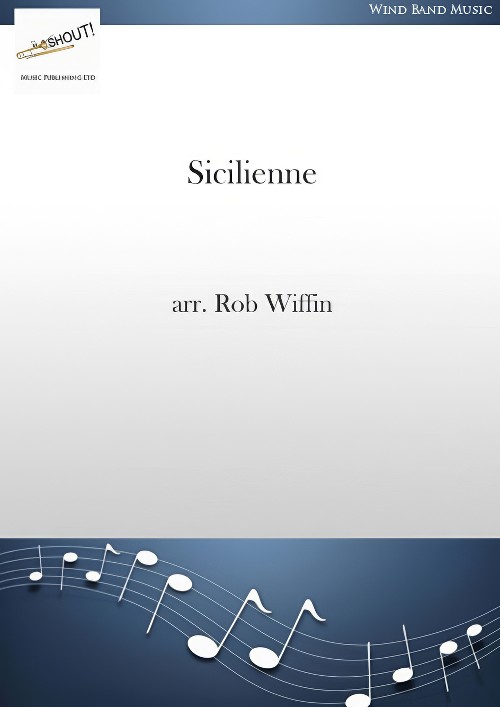 £33.95
£33.95Sicilienne (Concert Band - Score and Parts) - Wiffin, Rob
Rob Wiffin heard this played by the young cellist Sheku Kanneh-Mason as part of his short recital at the wedding of Meghan Markle and Prince Harry in May 2018. He was immediately struck by the simple charm of the music and decided to arrange it for band. In doing so he thought it best to just touch it gently rather than over-arrange it. Apart from changes of colour and a little bit of counter-melody the tuneful elegance of the music appears just as in the original solo for violin or ?€cello. The music is attributed to the Austrian composer and musician Maria Theresia von Paradis (May 15, 1759 ?€" February 1, 1824) but, according to Grove Music, this is false and it was possibly composed by violinist Samuel Dushkin (1891-1976), based on Weber's Romanze from his Violin Sonata Op.10, No.1. Whoever it may have been composed by, it is a highly attractive piece.Duration: 2.5
Estimated dispatch 7-14 working days
-
 £54.95
£54.95Ride (Concert Band - Score and Parts) - Joseph, Tyler - Lopez, Victor
Pop duo Twenty One Pilots hit #1 on the Billboard charts with this hit tune, "Ride." Looking for a hot rock title for your program where most everyone gets a crack at the melody? This is a sure winner! Duration: 1:45
Estimated dispatch 7-14 working days
-
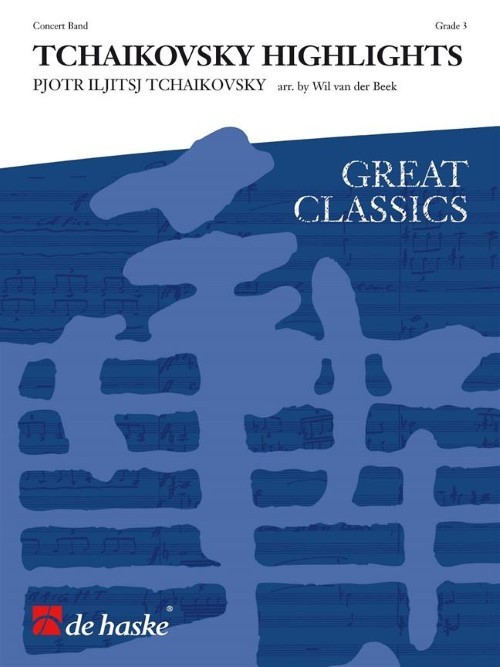 £104.99
£104.99Tchaikovsky Highlights (Concert Band - Score and Parts) - Tchaikovsky, Peter Ilyich - Van der Beek, Wil
Tchaikovsky is famous for his fantastic moving melodies. Different to many of his other romantic Russian contemporaries, Tchaikovsky had a particular feel for the European music taste of music, which made him immensely popular. In this accessible compilation, arranger Wil van der Beek uses a selection of Tchaikovsky's most beautiful melodies from works including Capriccio Italien, String Quartet No. 1 and his famous Piano Concerto No.1.Duration: 7.30
Estimated dispatch 7-14 working days
-
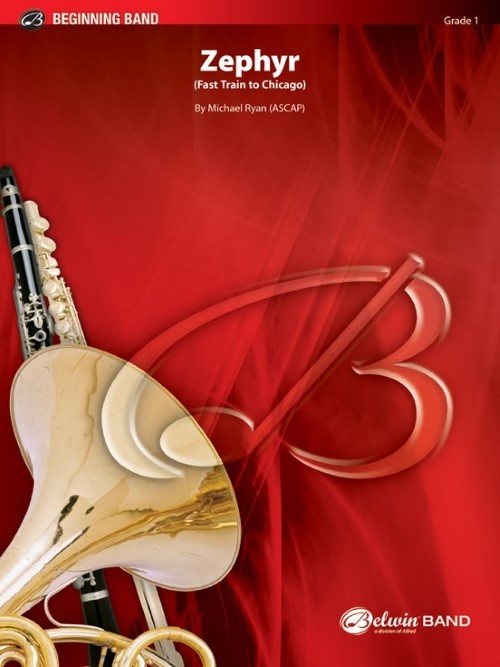 £51.50
£51.50Zephyr (Fast Train to Chicago) (Concert Band - Score and Parts) - Ryan, Michael
Commemorating the historic 1934 non-stop world record set by Burlington Railroad's 1,015 journey from Denver to Chicago, this brilliant original composition is filled with teaching opportunities. The historic train ride can be experienced throughout the work, including the sound of crossing bells and the familiar crossing horn signal. All aboard!Duration: 1:45
Estimated dispatch 7-14 working days
